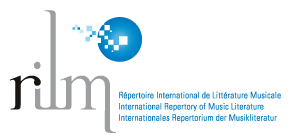Lauro Ayestarán and Carlos Vega’s Phraseology in the Transcription of the Candombe Drums
Keywords:
musical analysis, Afro-Cuban clave, Afro-Uruguayan musicAbstract
This paper examines the transcriptions of Afro-Latin American music made by the Uruguayan musicologist Lauro Ayestarán in 1948 and 1965: the “habanera” and its presence in Uruguay in the last third of the nineteenth century; the llamadas (“calling”) by drumming and marching corps of candombe, a musical practice originally played and danced by Afro-Uruguayan people, currently part of this country’s national popular culture.
I will argue that his transcriptions followed the principles of the Fraseología (“Phraseology”) by the Argentinian musicologist Carlos Vega (published in 1941). His approach had certain consequences involving: a specific analytic/visual representation of drumming patterns; the (mis)readings of these representations by later generations of Uruguayan musicians; the relation with the “sides” of the Afro-Cuban clave pattern 3-2, pointed in 2010 by Coriún Aharonián following Ayestarán’s transcriptions.
Published
Issue
Section
License
ATTRIBUTION-NONCOMMERCIAL 4.0 INTERNATIONAL
https://creativecommons.org/licenses/by-nc/4.0/
You are free to:
- Share — copy and redistribute the material in any medium or format
- Adapt — remix, transform, and build upon the material
- The licensor cannot revoke these freedoms as long as you follow the license terms.
Under the following terms:
- Attribution — You must give appropriate credit , provide a link to the license, and indicate if changes were made . You may do so in any reasonable manner, but not in any way that suggests the licensor endorses you or your use.
- NonCommercial — You may not use the material for commercial purposes .
- No additional restrictions — You may not apply legal terms or technological measures that legally restrict others from doing anything the license permits.
Notices:
You do not have to comply with the license for elements of the material in the public domain or where your use is permitted by an applicable exception or limitation .
No warranties are given. The license may not give you all of the permissions necessary for your intended use. For example, other rights such as publicity, privacy, or moral rightsmay limit how you use the material.







